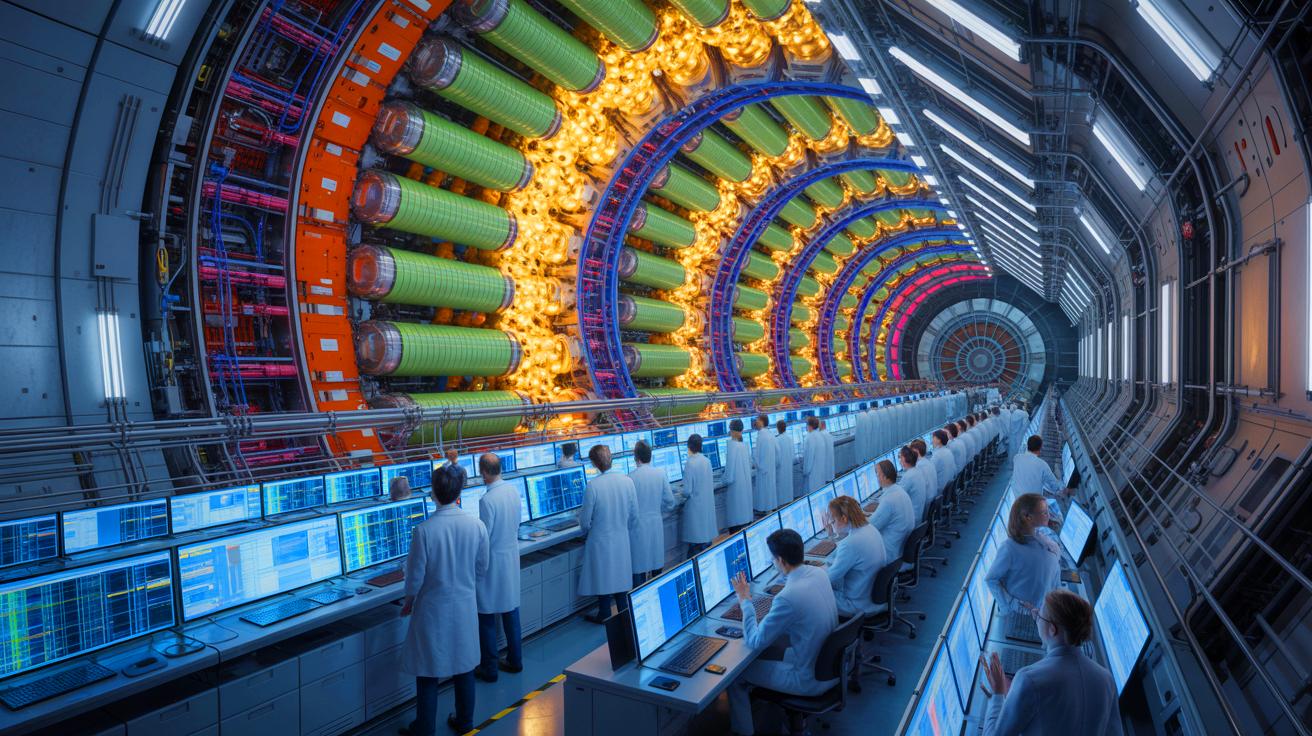IN A NUTSHELL
🔬 Researchers at the Large Hadron Collider have detected the creation of gold nuclei during unique ultra-peripheral collisions.
💡 The University of Kansas team developed innovative techniques to spot these clean collisions without the typical debris.
🚀 Plans for larger colliders underscore the importance of understanding byproducts and the behavior of short-lived particles.
🧪 The ALICE experiment’s findings highlight the potential of advanced detection methods in particle physics research.
The world of particle physics continues to push the boundaries of what is possible, as evidenced by recent findings at the Large Hadron Collider (LHC) on the French-Swiss border. Researchers at the LHC have detected the creation of gold nuclei during a unique set of interactions known as ultra-peripheral collisions. This discovery, facilitated by scientists from the University of Kansas (KU) working on the ALICE experiment, highlights the potential of advanced detection techniques. As plans to construct even larger colliders emerge, understanding the byproducts of such experiments becomes increasingly vital.
Understanding Ultra-peripheral Collisions
In the realm of particle physics, the focus often lies on the aftermath of high-speed collisions. However, a different approach has gained attention through the work of Daniel Tapia Takaki and his team at KU. Their interest lies in ultra-peripheral collisions (UPCs), where particles nearly collide but do not physically touch each other. These near misses allow for a unique type of interaction.
During UPCs, heavy ions with numerous protons in their nuclei generate powerful electric fields. As these ions accelerate, they emit photons or light. This light, when energetic enough, can penetrate deeply into another nucleus, offering a high-energy glimpse without the typical debris of a full collision. This process, known as photon-photon collision, is significant because it results in cleaner interactions compared to traditional collider experiments.
Jaya Anand Singh’s Research Path : A Journey from Curiosity to Contribution
Spotting Clean Collisions
The clean nature of photon-photon collisions presents both challenges and opportunities. Takaki and his colleagues have developed innovative techniques to detect these interactions, which often go unnoticed in the particle physics community. The energy from these collisions can eject protons from a nucleus, leading to the transformation of elements.
For instance, the ejection of protons can change lead into thallium, mercury, or even gold. This phenomenon was observed in the LHC, where the detection of gold nuclei occurred. The KU team’s technology played a crucial role in capturing these fleeting particles, some of which can trigger safety alarms within the collider.
Preparing for Larger Colliders
As the scientific community looks to the future, plans are underway to develop colliders that are significantly larger than the current LHC. Some proposals suggest facilities up to 60 miles long. With such ambitious projects, understanding the byproducts and nature of collisions becomes increasingly important.
Researchers are keen to study the various interactions that take place within these particle accelerators. The clean collisions observed in UPCs offer a valuable perspective, as they provide insights without the complexity of particle sprays. The work at the LHC serves as a foundation for future experiments, where precise detection and understanding of these interactions will be crucial.
The Role of Advanced Detection Techniques
The detection of gold nuclei at the LHC is a testament to the advancements in particle detection techniques. The technology developed at KU has paved the way for identifying short-lived particles and understanding their behavior. These advancements not only contribute to scientific knowledge but also ensure the safety and efficiency of collider operations.
As researchers continue to explore the possibilities within particle physics, the role of innovative detection methods cannot be overstated. These techniques enable scientists to capture and analyze interactions that were previously difficult to study. The findings from the ALICE experiment demonstrate the potential of such approaches, laying the groundwork for future discoveries.
The ongoing research at the LHC and the development of larger colliders pose intriguing questions about the future of particle physics. As scientists delve deeper into the nature of ultra-peripheral collisions and their byproducts, what new insights into the fundamental nature of matter might they uncover?
This article is based on verified sources and supported by editorial technologies.
Did you like it? 4.8/5 (20)

